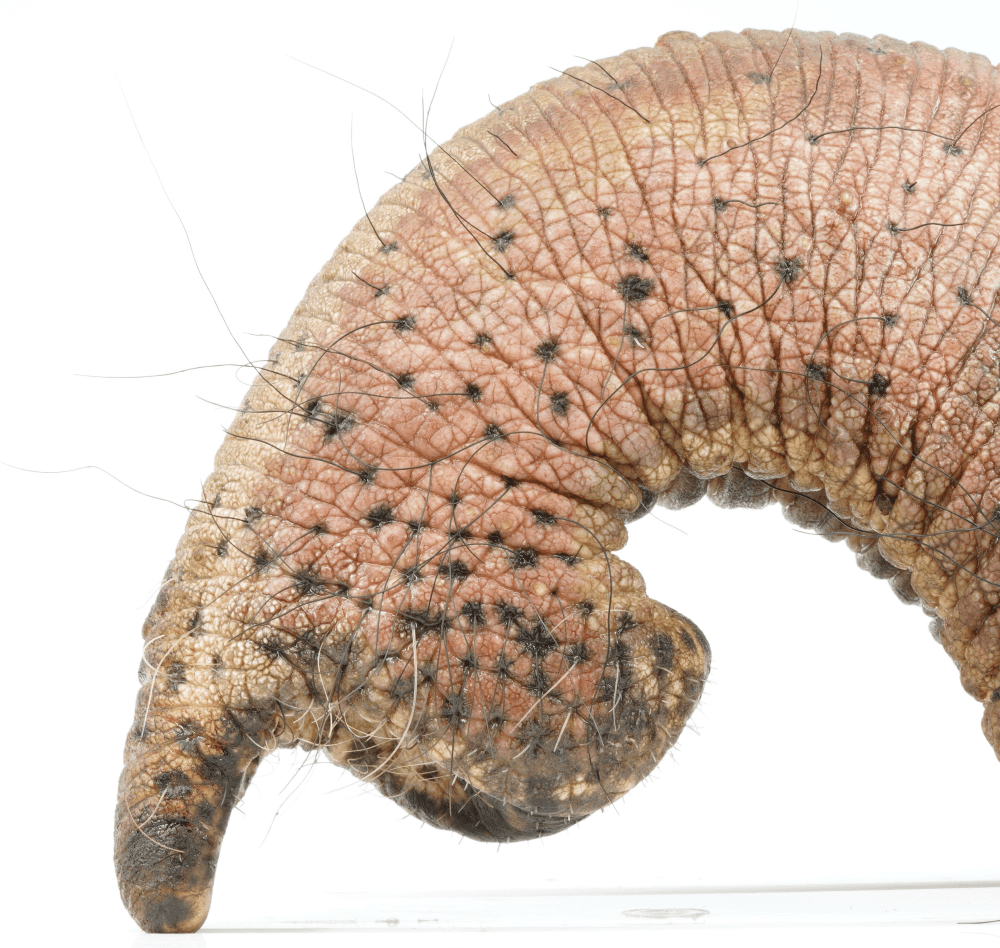Elephant whiskers aren’t like those found on other animals, like cats and rats. They are thick and immobile, leading researchers to wonder what purpose they actually serve. Elephant whiskers were first described back in 1890, but a new study is the first of its kind to dive into how the bristles may benefit these animals.
Elephants get weirder the closer you look at them, and the trunk is no exception. I mean, just get a load of this.

The trunk tip of an Asian elephant cow is a highly adapted organ, if not a little NSFW from the side.
Image credit: Nora Deiringer
Humorous though it may look to us, these incredible appendages have around 150,000 muscle units per trunk. The WWF says it may be the most sensitive organ found in any mammal, while also being able to suck up and contain eight liters of water at a time. It can grab food, steal hats, and even act as a snorkel while they’re swimming. They are strong, and not to be messed with unless you want to get stomped into the afterlife.
But what about those big bristly whiskers? To get a better idea of their purpose, researchers conducted two branches of investigation, one very fun, the other less so.
The fun experiment involved analyzing video footage of a female Asian elephant having a ball collecting fruits and vegetables from a box. Like a wholesome glory hole, you can watch the talented trunk zooming through an opening where it skilfully pinches a carrot and sucks up an apple. The footage showed that the whiskers remain immobile while the trunk is doing its thing, unlike those of cats and rats that often twitch to get further information about the environment.
The less fun experiment looked at the trunks and whiskers of six African and eight Asian zoo elephants that had died of natural causes or been euthanized due to serious health complications. Doing so revealed the whiskers are thick, cylindrical, and lacking in the specialized follicle features that help the brains of other animals detect delicate whisker movement.
Combined, the results indicate that while their whiskers aren’t active in sensing the immediate environment around the trunk, they likely contribute to the trunk’s already highly sensitive nature to create a uniquely maneuverable organ.
“Trunk whiskers of elephants differ markedly from the facial whiskers of other mammals. In many small mammals, whiskers are thin, tapered, mobile, symmetrically arranged around the snout and function in peri-snout sensing,” concluded the study authors. “In contrast elephant trunk whiskers are thick, non-tapered, immobile, lateralized and are arranged in specific high-density arrays on the ventral trunk and the trunk tip.”
“We suggest unique trunk whisker characteristics evolved to provide a haptically controlled action space for the extraordinary manipulative capacities of the elephant trunk.”
The study is published in the journal Communications Biology.
Source Link: Elephant Whiskers Improve Trunk Sensitivity, Making Them The Ultimate Thieves